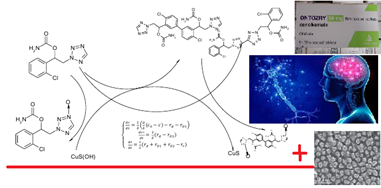FULL PAPERS
The Theoretical Description for Cenobamate CuS-Assisted Electrochemical Determination in Pharmaceutical Formulations and Wastewater

Published
January 3, 2024
Keywords
- epilepsy,
- cenobamate,
- copper sulfide nanoparticles,
- electrochemical sensors,
- stable steady-state
How to Cite
(1)
Volodymyr Tkach; Morozova, T.; Khrutba, V.; Hlukhonets, A.; Kushnir, M.; Ivanushko, Y.; Kryvetskyi, V.; Kryvetska, I.; Kryvetskyi, I.; Yagodynets, P.; Kucher, M.; Kormosh, Z.; Chikun, N.; Monteiro, M. J. The Theoretical Description for Cenobamate CuS-Assisted Electrochemical Determination in Pharmaceutical Formulations and Wastewater. Orbital: Electron. J. Chem. 2024, 15, 198-201.
Copyright (c) 2024 Orbital: The Electronic Journal of Chemistry

This work is licensed under a Creative Commons Attribution-NonCommercial-NoDerivatives 4.0 International License.
Abstract
For the first time, the theoretical description for cenobamate antiepileptic drug on anode, assisted by copper sulfide nanoparticles in alkaline medium, has been given. Two mechanisms, involving either tetrazolic ring, or the carbocyclic aromatic moiety, are possible for this process, reason why the concentration of the drug will be identified and quantified by two peaks. Despite of the mechanism hybrid nature, both of the peaks will produce an easy interpretable analytical signal, being thereby possible to confirm the efficiency of the electroanalytical signal.




